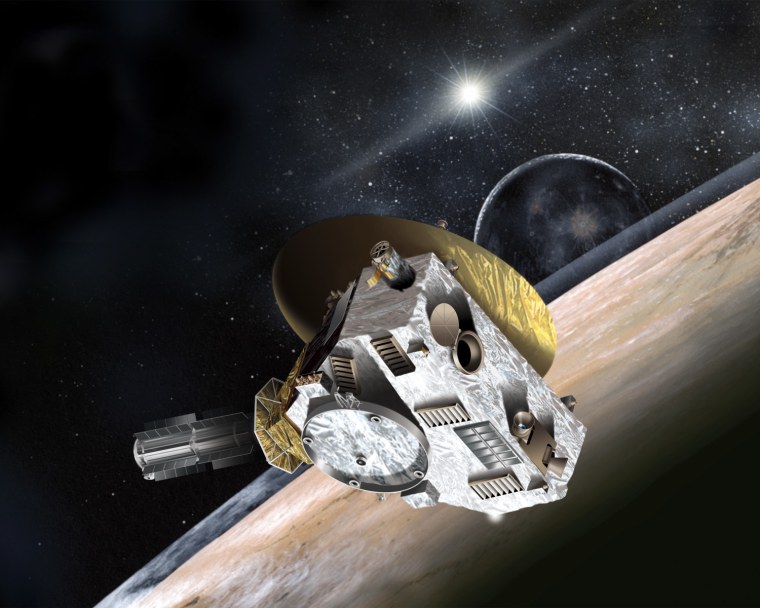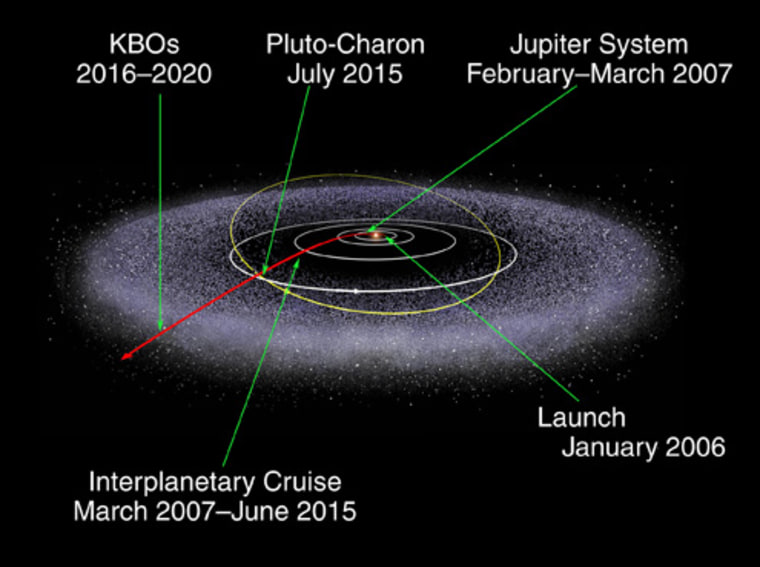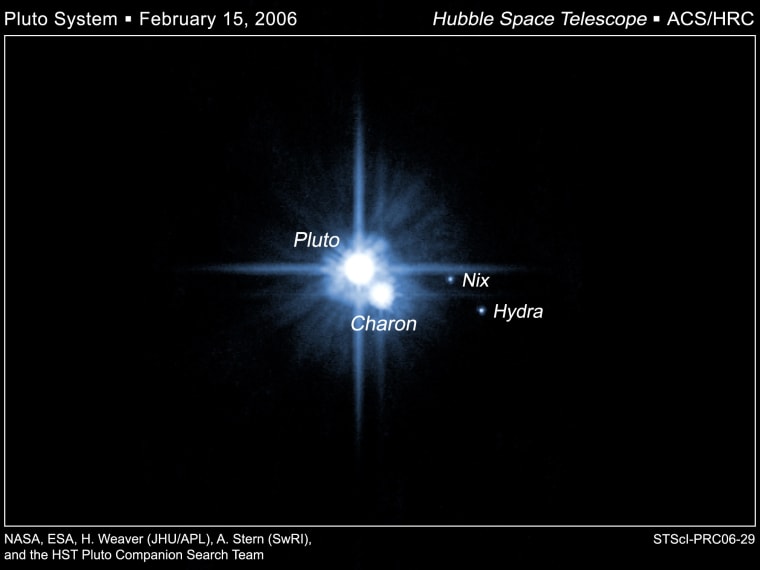
In case you haven't had enough solar system exploration this fall after the excitement at Mars and more recently the excitement at Comet 67P/C-G, I've got good news for you! Yesterday NASA "woke-up" the New Horizons spacecraft on its way to study Pluto and the Kuiper Belt.

New Horizons was launched in January of 2006 and has been cruising towards the outer solar system for the past eight years. Just as with the Rosetta spacecraft, New Horizons was put into a hibernation mode to save power until it approached its destination. The alarm was scheduled to go off yesterday afternoon and then after a pre-programmed systems check, New Horizons "phoned home" to send word back to Earth on its status. At the current distance the spacecraft is from Earth (about 2.9 billion miles), this signal took almost four and a half hours(!) to reach us. Talk about a long distance call.
New Horizons is now just under a month away from its final approach to Pluto and its moons. It will begin taking observations in mid-January and make its closest approach to Pluto in mid-July. After Pluto, the spacecraft will continue through the Kuiper Belt with the hopes of encountering at least two Kuiper Belt objects as part of its extended mission. For an amazingly detailed and exhaustive write-up on the spacecraft's mission, head over to The Planetary Society.

Compared to the rest of the solar system, our data on Pluto and the Kuiper Belt are extremely sparse. Even with the Hubble Space Telescope, these objects are hard to see. They are essentially small rocky bodies that don't give off any light other than reflecting the small fraction of sunlight they receive billions of miles away from the Sun itself. The New Horizons mission will get an unprecedented look at Pluto and its brethren and as a result could shed a lot of light (no pun intended) on the formation of our solar system, specifically how and why the inner planets are rocky, the outer planets are gaseous, and the remaining debris (in Pluto's neighborhood and beyond) is icy. Believe it or not, solar system formation is still a huge open question in astronomy.
Here's hoping New Horizons helps us find some answers.
And now for some geek that's closer to home:
- Absolutely STUNNING gallery of photos of bats taken by scientist researching their behavior.
- Electric eels can remotely paralyze the muscles in their prey.
- Data visualization of all NBA and NFL game scores in history.
- The world's oldest human engraving has been found on a fossilized sea shell dating back some 500,000 years.
- Further analysis of Richard III's DNA reveals evidence of cuckolding somewhere in the family tree.
- In other DNA news, a technique to distinguish forensic evidence from identical twins is about to be used in court for the first time.
- The typography of science fiction fonts - featuring Alien.
- Last weekend was the 60th anniversary of the a meteorite that came down in Alabama and hit an actual person on the way.
- With all the excitement over the Orion test flight as a path to Mars, here's the latest on what's actually happening on Mars.
- Every spaceship that has carried humans into space in one graphic.
Keep on geeking! @Summer_Ash